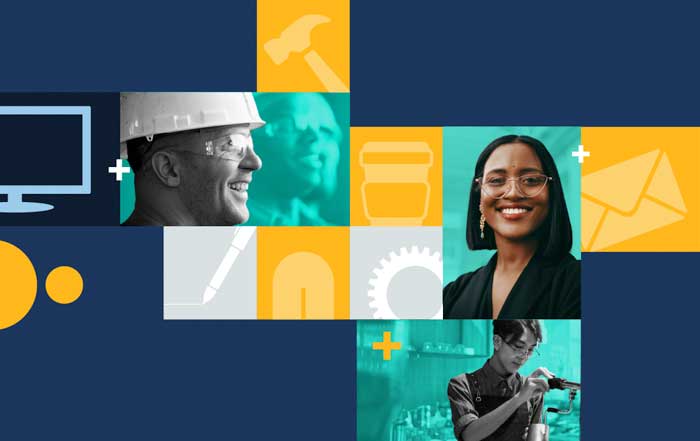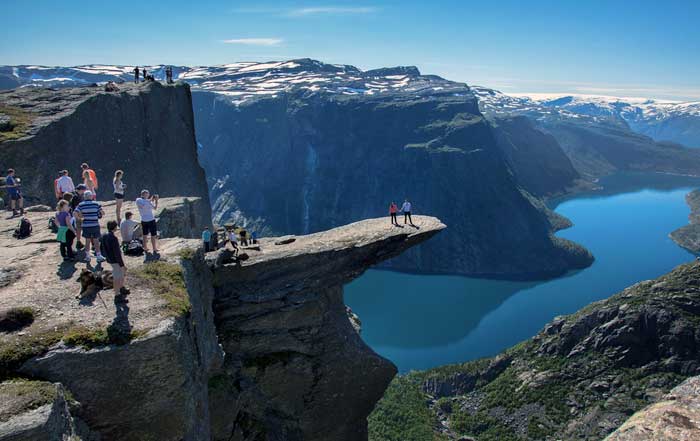In the ever-expanding global wellness industry, the role of influencers has evolved from peripheral social media promoters into vital engines of trust, inspiration, and measurable business growth. So these voices are no longer simply endorsers of products; they are founders, investors, educators, and storytellers who connect science, culture, and lifestyle in ways that resonate deeply with audiences.
For wellnewtime.com, a publication dedicated to exploring the intersections of wellness, fitness, business, lifestyle, and global innovation, this transformation reflects how modern consumers think and act. Readers today seek authenticity, sustainability, and expertise behind every recommendation. The top wellness influencers driving brand success worldwide embody these values—balancing credibility with creativity, and influence with integrity.
The Global Wellness Economy in 2025
The global wellness market is now valued at more than US$5 trillion, according to updated research from the Global Wellness Institute, driven by surging consumer awareness around mental health, nutrition, physical fitness, and self-care. This expansion has given rise to a new type of influencer: hybrid professionals who blend digital storytelling with deep expertise in health sciences, psychology, and sustainable living.
Unlike the early days of influencer marketing, when visibility often mattered more than substance, the post-pandemic consumer landscape rewards evidence-based advice and transparency. Followers demand data, personal accountability, and visible alignment between an influencer’s lifestyle and the products they promote.
Companies that once depended solely on celebrity endorsements now prioritize partnerships with experts who can integrate seamlessly into the brand’s story and demonstrate lived credibility. This is particularly true for brands in clean beauty, activewear, plant-based nutrition, meditation apps, and holistic healthcare sectors.
In this dynamic environment, wellness influencers act as the bridge between aspiration and action. They help audiences make sense of the science, filter out misinformation, and humanize wellness as a daily practice rather than an unattainable luxury.
What Makes a Wellness Influencer Effective in 2025
An effective wellness influencer in 2025 embodies five essential attributes: authenticity, authority, educational depth, emotional intelligence, and entrepreneurial adaptability. These qualities define why audiences trust them and why global brands—from Nike to L’Oréal—seek long-term collaborations rather than fleeting sponsorships.
Authenticity remains the cornerstone. Audiences detect when content is commercial rather than genuine. Successful influencers share personal wellness journeys—both progress and setbacks—to maintain empathy and relatability.
Authority, backed by qualifications or demonstrable expertise, helps counteract the skepticism that surrounds many online health claims. Registered dietitians, physiotherapists, and certified trainers command respect when they communicate complex topics simply and accurately.
Educational depth is equally important. Today’s influencers must interpret the scientific and psychological dimensions of wellness, guiding audiences toward informed decisions.
Emotional intelligence drives connection—how an influencer listens, responds, and creates safe digital spaces matters as much as their visual appeal.
Finally, entrepreneurial adaptability allows them to diversify income through product lines, subscription platforms, courses, and brand equity partnerships. Their influence becomes sustainable, not situational.
🌟 Top Wellness Influencers 2025
Driving Global Brand Success in the $5 Trillion Wellness Economy
📊 Global Wellness Market
🔑 5 Essential Influencer Attributes
🌟 Leading Wellness Influencers
Adriene Mishler
Yoga With Adriene • 13M+ Subscribers
Adidas PartnerMindfulnessPamela Reif
European Fitness Icon • Naturally Pam Founder
Sustainable NutritionFitnessDr. Megan Rossi
The Gut Health Doctor • King's College Researcher
Science-BasedBio&Me FounderChloe Ting
Fitness Challenge Creator • 25M+ Subscribers
GymsharkMyProteinKourtney Kardashian
Lemme Supplements • Poosh Founder
EntrepreneurClean BeautySteph Grasso, MS, RD
Registered Dietitian • TikTok Nutrition Expert
Gen ZScience CommunicationLauryn Bosstick
The Skinny Confidential • Beauty Tools Empire
TransparencyPodcast HostMassy Arias
Fitness Empowerment • Fabletics Partner
InclusivityMental Health🚀 Brand Partnership Models
Co-Creation Model
Influencers integrated into product development, testing, and brand storytelling from inception
Multi-Platform Ecosystems
Content across video, podcasting, newsletters, and community apps for narrative continuity
Regional Localization
Culturally sensitive campaigns with local influencers reflecting unique wellness perspectives
🏆 Landmark Collaborations
Inclusive fitness marketing, wellness retreats, digital training platforms
Luxury mindfulness, virtual spaces, breathwork integration
"Move with Purpose" campaign, collective influencer model
Accessible nutrition, fitness challenge integration
📈 Key Trends Shaping 2025
🎯 Consumer Demands
- Transparency:Disclosure of sponsorships and product testing
- Diversity:Inclusive representation across age, gender, ethnicity
- Credentials:Professional qualifications and demonstrable expertise
- Accountability:Personal use and measurable results
- Values Alignment:Brand partnerships that reflect personal philosophy
Key Wellness Influencers Shaping Global Brand Narratives
Adriene Mishler – Yoga’s Universal Voice
Adriene Mishler, founder of Yoga With Adriene, remains one of the most influential figures in digital wellness. Her YouTube channel surpasses 13 million subscribers, with audiences spanning from the United States to Asia and Europe. Her philosophy—“Find What Feels Good”—promotes yoga as accessible and inclusive, not elite.
Her long-standing partnership with Adidas demonstrates how wellness content can be leveraged to build meaningful lifestyle associations for a major brand. By creating yoga challenges and mindfulness programs integrated into Adidas campaigns, Mishler extends the brand’s message of holistic fitness beyond apparel and into emotional well-being.
Her impact lies not in promotion but participation. She invites followers into practice rather than product, subtly reinforcing the brand’s authenticity. Her collaborations also illustrate how digital wellness leaders can inform sustainable design and mental health advocacy at a corporate level.
Learn more about wellness programs that shape the global conversation.
Pamela Reif – Europe’s Fitness and Nutrition Powerhouse
German influencer Pamela Reif has built a formidable presence combining physical training, balanced nutrition, and entrepreneurship. With her brand Naturally Pam, she expanded her influence into the food and supplement market, promoting natural ingredients and sustainable sourcing.
Her fitness routines, streamed across platforms, have become daily rituals for millions, particularly among younger European audiences. She collaborates with brands that uphold transparency and eco-responsibility, aligning perfectly with Europe’s growing appetite for ethical wellness consumption.
Reif’s approach demonstrates the power of regional identity in a global market. She speaks to cultural values around discipline, balance, and self-care—qualities that resonate strongly across German-speaking countries and increasingly beyond Europe.
Explore related insights on fitness innovation and how digital creators are transforming the health economy.
Dr. Megan Rossi – The Gut Health Doctor
Scientific credibility is increasingly crucial in wellness communication, and Dr. Megan Rossi exemplifies this. A registered dietitian and research fellow at King’s College London, she translates the latest microbiome science into practical advice through her platform The Gut Health Doctor.
Her books, lectures, and brand collaborations focus on how gut health influences mental clarity, immunity, and overall wellness. In partnering with reputable nutrition and supplement brands, Dr. Rossi adds scientific validation that consumers crave.
Her influence extends beyond content—she helps guide brand formulation, labeling, and compliance, ensuring that partnerships meet evidence-based standards. This collaborative model between influencer and enterprise reduces misinformation and builds trust among global consumers.
For an expanded discussion on health-centric leadership, visit health insights.
Chloe Ting – The Architect of Digital Fitness Challenges
Australian-based Chloe Ting continues to dominate the global fitness content space with over 25 million YouTube subscribers. Her signature “fitness challenge” series has transcended digital borders, encouraging millions to commit to 2-week or 4-week programs with measurable results.
Ting’s strategic collaborations with Gymshark, MyProtein, and fitness-tech brands prove that accessibility drives conversion. Her free programs function as gateways to premium content, sportswear, and nutritional supplements, demonstrating an effective funnel between awareness and purchase.
Her digital model offers a blueprint for modern brand engagement—community participation, measurable results, and consistent authenticity. By 2025, her influence continues to inspire global discussions on body positivity and achievable fitness goals.
Kourtney Kardashian – From Celebrity to Wellness Entrepreneur
Through her brand Poosh and supplement line Lemme, Kourtney Kardashian has transitioned from reality-TV celebrity to a serious wellness entrepreneur. Her strategy blends aspirational aesthetics with attainable daily habits.
Lemme’s success lies in storytelling. Each product is accompanied by educational narratives around vitamins, adaptogens, and lifestyle benefits, reinforcing credibility. Collaborations with leading nutritionists and sustainable packaging experts illustrate a growing trend: celebrities seeking to ground their influence in authentic wellness values rather than superficial luxury.
This evolution reflects how the boundaries between entertainment, beauty, and health are dissolving, giving rise to multipurpose wellness brands that blend glamour with guidance.
Readers can explore the global rise of celebrity wellness ventures on business innovation.
Steph Grasso – Nutrition Meets Social Media Strategy
Registered dietitian Steph Grasso, MS, RD, represents the new generation of scientifically trained influencers who dominate short-form content. Her TikTok and Instagram channels translate nutrition science into daily tips, myth-busting segments, and humorous education.
Her ability to humanize scientific detail in under 60 seconds makes her an invaluable ally for health brands targeting Gen Z and Millennials. She often collaborates with grocery chains and food startups to showcase balanced meals and functional nutrition.
Grasso’s approach merges credibility with creativity—proof that formal qualifications can thrive alongside entertainment in the digital wellness ecosystem.
Discover similar trends redefining digital wellness education on innovation and trends.
Lauryn Bosstick – The Beauty of Candid Wellness
As founder of The Skinny Confidential, Lauryn Bosstick has built a media empire around candid conversations about skincare, beauty, and mental health. Her signature pink aesthetic and bold honesty have turned taboo topics—aging, hormones, female health—into open dialogue.
Her product line, The Skinny Confidential Beauty Tools, has expanded globally, offering facial sculpting devices and clean-ingredient skincare. Her partnerships with dermatologists and cosmetic researchers enhance brand legitimacy, while her podcast connects millions to diverse health and business experts.
Lauryn’s story underscores a defining principle of 2025 wellness branding: transparency is the new luxury.
Massy Arias – Empowering Through Movement and Representation
Dominican-American trainer Massy Arias embodies wellness as empowerment. Her partnership with Fabletics and her social media coaching programs have helped redefine strength and inclusivity in the fitness industry.
Macias promotes physical health as emotional resilience—fitness as therapy—and has used her platform to advocate for mental health awareness in minority communities. Her work reminds global brands that representation and authenticity are powerful catalysts for loyalty.
Her partnership with Fabletics demonstrates how influencer collaborations can drive not only revenue but social transformation.
Continue reading about the intersection of global wellness and identity on lifestyle perspectives.
The Rise of Asian and Middle Eastern Wellness Voices
Across Asia and the Middle East, new leaders are shaping local wellness conversations that resonate internationally. Singaporean yoga teacher Liv Lo Golding, Thai nutritionist Chanutra Sangchan, and Dubai-based wellness entrepreneur Nadine Kanso illustrate the diversity of the global movement.
These influencers localize global wellness concepts—blending cultural heritage, modern science, and spirituality. They partner with international brands seeking regional authenticity, proving that the next growth wave in wellness influence will not emerge solely from Western markets but from Asia’s digital heartlands.
Explore regional stories in wellness and mindfulness through world coverage.
How Wellness Influencers Drive Brand Success in 2025
The success of modern wellness brands is deeply intertwined with influencer partnerships that are built on substance rather than spectacle. Unlike traditional marketing strategies, influencer-driven brand growth is not about broad impressions—it is about emotional alignment, community belonging, and the continuous reinforcement of values. The influencers who have achieved enduring success in 2025 do so through thoughtful communication, cultural sensitivity, and strategic use of media ecosystems that amplify their credibility.
At the heart of their influence lies the power to transform behavior. These creators do not simply sell products; they shape rituals, routines, and beliefs about what it means to live a balanced life. Their content motivates small, consistent actions—hydration, mindfulness, movement, or conscious consumption—that compound into lifestyle transformation. This cumulative power gives wellness influencers unmatched authority in shaping brand narratives.
Emotional Connection as a Strategic Advantage
The emotional bond between influencer and audience is the foundation of their economic power. Followers feel personally seen and understood by their favorite creators. When an influencer shares an intimate reflection about burnout, anxiety, or personal healing, audiences recognize authenticity that transcends marketing language.
Brands that enter this relationship carefully, aligning their products with genuine wellness stories, benefit from halo effects of empathy and trust. When Headspace, Alo Yoga, and Lululemon collaborate with mindful creators who live their philosophies, the resulting campaigns attract engagement that feels like conversation rather than persuasion.
For example, when Lululemon partnered with global mindfulness ambassador Jay Shetty, the collaboration emphasized purpose-driven living rather than simple apparel promotion. His storytelling encouraged audiences to connect their physical performance to emotional intelligence—a subtle yet effective extension of the brand’s identity as more than a sportswear company.
These strategies show that emotional resonance has replaced visual glamour as the dominant form of influence in the wellness economy.
The Evolution from Sponsorship to Co-Creation
The wellness influencer economy has matured beyond transactional sponsorships. Today’s most successful brand partnerships take the form of co-creation, where influencers are integrated early into product development, storytelling, and even long-term business planning.
In co-creation, influencers become part of the design process—testing ingredients, shaping packaging, and helping brands articulate narratives that feel authentic. This participatory model allows companies to benefit from influencer insight into consumer preferences and behavior.
Pamela Reif’s involvement in developing snacks for Naturally Pam or Dr. Rossi’s advisory role in formulating digestive health products exemplify how knowledge-based creators strengthen the credibility of brands. Instead of relying on endorsement fees, they often receive equity stakes or long-term licensing arrangements, reflecting their deeper strategic value.
This evolution signifies a broader shift: the line between influencer and entrepreneur is disappearing. In many cases, influencers are now co-founders of wellness ventures, lending their name, expertise, and community to shape entire product categories.
Multi-Platform Ecosystems and Diversified Influence
By 2025, the average top wellness influencer operates across multiple digital ecosystems—video, podcasting, newsletters, community apps, and even metaverse or virtual fitness spaces. These multi-platform presences allow for narrative continuity across different contexts.
For instance, Adriene Mishler’s Find What Feels Good platform extends her YouTube community into a paid subscription model that includes classes, meditations, and personal journaling tools. Lauryn Bosstick’s The Skinny Confidential Him & Her podcast invites thought leaders from diverse disciplines—nutrition, neuroscience, and business—building bridges between beauty, health, and entrepreneurship.
Such multi-platform engagement enables brands to collaborate through storytelling arcs rather than isolated ads. A mindfulness brand might feature on an influencer’s podcast, newsletter, and short-form reels over several weeks, reinforcing repetition through authenticity rather than intrusion.
This omnichannel presence mirrors how wellness itself operates: holistic, continuous, and integrated across daily experiences.
Learn more about emerging digital ecosystems shaping wellness storytelling on innovation and trends.
The Power of Localization in Global Wellness Campaigns
While global influencers deliver vast reach, the most successful wellness campaigns increasingly incorporate local resonance. Consumers in different regions interpret wellness through unique cultural lenses.
In Asia, for example, wellness is often linked to traditional medicine and collective well-being, while in Europe it is associated with natural balance and sustainability. In North America, individuality and self-optimization dominate the narrative.
Brands like L’Oréal, Unilever, and Nestlé Health Science now design regional influencer programs to reflect these differences. A single campaign might include Western experts discussing biohacking alongside Asian creators exploring meditation, tea rituals, or herbal nutrition.
Localization also ensures regulatory and linguistic accuracy, which are vital in health-related messaging. Wellness influencers who speak local dialects or represent diverse backgrounds make global brands feel personally relevant in each market.
Explore regionally inspired wellness models and practices on world insights.
Transparency, Science, and Ethical Storytelling
Consumers in 2025 scrutinize wellness marketing with unprecedented skepticism. Influencers who thrive under such scrutiny do so because they embrace transparency—disclosing sponsorships, citing scientific studies, and demonstrating personal use of the products they promote.
Dr. Megan Rossi, Steph Grasso, and Andrew Huberman have set new standards for scientific communication, using evidence-based frameworks to explain how nutrition, exercise, or mindfulness affect physiology. These figures have made it nearly impossible for brands to rely on vague claims without substantiation.
In parallel, there is growing demand for ethical storytelling—ensuring that wellness narratives do not exploit insecurities or promote unrealistic body ideals. Influencers who embrace diversity in age, gender, and ethnicity cultivate more inclusive communities. Brands such as Dove, Asics, and Aesop have integrated this inclusive messaging, often guided by creators who advocate for self-acceptance and representation.
This convergence of science and ethics is defining the next decade of wellness communication. Consumers now associate integrity with beauty, intelligence with trust, and diversity with relevance.
Explore related content about wellness standards and regulation on health.
Landmark Brand Collaborations Defining the Era
Fabletics x Massy Arias – Fitness as Empowerment
The partnership between Fabletics and Massy Arias stands as a model for inclusive fitness marketing. Their collaborative collections combine high-performance materials with affirming visual representation of women of color. Campaigns emphasize self-care through strength rather than appearance, encouraging audiences to reframe what a “fit” body looks like.
The collaboration has expanded beyond apparel to include wellness retreats and digital training platforms, blurring the line between brand and community. It demonstrates how emotional storytelling can redefine commercial engagement.
Learn more about fitness leadership shaping new markets on fitness.
Alo Yoga x Kendall Jenner – Blending Wellness and Lifestyle
Alo Yoga’s collaboration with Kendall Jenner and Hailey Bieber represents the fusion of luxury, mindfulness, and digital innovation. The brand’s campaigns go beyond product photography, emphasizing lifestyle—breathwork, yoga practice, and sustainable living.
Through creative integration with virtual spaces such as Alo Sanctuary in Roblox, the brand merges fashion, gamification, and community wellness. Jenner’s involvement brings aspirational visibility while maintaining the brand’s modern spirituality.
Such partnerships illustrate how technology and mindfulness can coexist, attracting younger audiences who perceive wellness as both aesthetic and emotional.
Kourtney Kardashian’s Lemme – Wellness as Brand Ownership
Kourtney Kardashian’s shift from influencer to wellness entrepreneur through Lemme exemplifies how personal branding can evolve into product ownership. By grounding her company in transparency—organic ingredients, clinically reviewed formulas, and eco-conscious packaging—she redefined how celebrity brands can communicate responsibility.
Her success shows that modern audiences are receptive to celebrity wellness ventures when they emphasize education, research, and personal transformation rather than glamour alone. The lesson for global businesses is clear: credibility is earned, not inherited.
Chloe Ting and MyProtein – Accessible Nutrition
In her ongoing partnership with MyProtein, Chloe Ting has championed affordable, high-quality nutrition products that complement her free fitness challenges. The collaboration bridges content and commerce effectively, offering seamless integration between workouts and nutrition advice.
The campaign’s success stems from mutual alignment—Ting’s audience values results and consistency, while MyProtein benefits from association with her credibility and transparency. It exemplifies the shift toward consumer-first marketing, where content and product coexist naturally.
Dr. Megan Rossi and Bio&Me – Science-Driven Food
Dr. Megan Rossi’s brand Bio&Me, specializing in gut-friendly foods, sets a benchmark for science-driven entrepreneurship. With products stocked in major UK supermarkets, her brand connects clinical evidence with accessible nutrition.
Her dual role as researcher and entrepreneur helps reestablish consumer trust in packaged health foods, often criticized for misleading marketing. Bio&Me demonstrates how professional expertise can powerfully differentiate a wellness brand in a crowded field.
Lauryn Bosstick and Beauty Tools – Experience Meets Design
Lauryn Bosstick’s beauty line under The Skinny Confidential umbrella merges functional design with aesthetic pleasure. Her ice rollers, sculpting tools, and skincare accessories reflect consumer demand for at-home rituals that blend self-care and science.
The brand’s viral success underscores how direct-to-consumer models allow influencers to own their creative ecosystems. Each product tells a story, extending the narrative of self-love that defines her content.
Her company’s trajectory—from blog to global brand—offers a case study in how authenticity scales when supported by strategic design and consistent voice.
Nike and Global Wellness Creators – The Collective Model
By 2025, Nike has shifted from using individual athlete ambassadors to nurturing a collective of wellness creators across regions. These creators, including mindfulness coaches, physical therapists, and nutritionists, co-develop content around longevity, mental resilience, and community sport.
The company’s “Move with Purpose” campaign, launched in 2024, signaled Nike’s intention to connect athletic performance with emotional wellness. Influencers were given freedom to reinterpret the brand’s message for their local communities—turning Nike from a symbol of competition into one of balance.
The model highlights a future where large corporations partner with multiple micro-influencers to achieve both scale and authenticity.
The Role of Technology in Amplifying Influence
Artificial intelligence, personalization algorithms, and analytics tools now allow influencers to refine their communication with precision. Advanced platforms analyze engagement sentiment, helping creators understand which topics inspire trust and which trigger skepticism.
Wellness influencers use AI to track metrics on emotional tone, user feedback, and physiological data from wearables to personalize audience experiences. For example, fitness creators integrate Garmin or Whoop data to share progress transparently, demonstrating measurable wellness improvement.
AI also assists in content creation—optimizing captions, analyzing visual trends, and predicting viral potential. However, ethical influencers remain cautious about over-automation, emphasizing that emotional intuition and human storytelling must remain central to wellness communication.
Sustainability as a Moral Obligation
The intersection of sustainability and wellness is increasingly non-negotiable. Influencers advocating environmental awareness, from Gisele Bündchen to Immy Lucas, promote holistic well-being that extends to the planet.
Their message is simple: health and environmental responsibility are inseparable. Audiences now expect influencers to highlight sustainable sourcing, biodegradable packaging, and cruelty-free testing. Brands failing to demonstrate these commitments risk alienating a socially conscious generation.
In 2025, wellness influence is measured not just in engagement metrics but in measurable ecological and social outcomes. Campaigns that promote recycling, renewable energy, or ethical consumption gain both reputational and commercial benefits.
For in-depth coverage of wellness and environmental synergy, visit environment insights.
-










